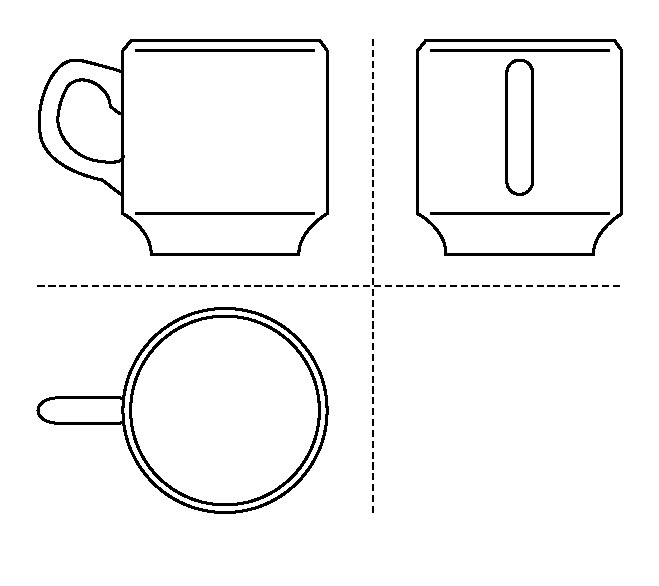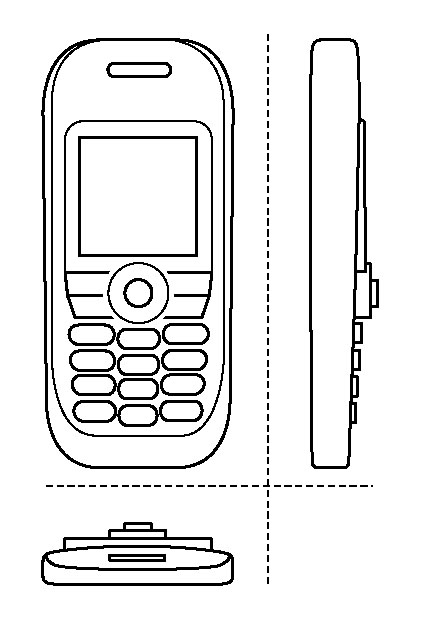Learning to read tactile images
The Musée des Sciences et de l’Industrie, together with the Louvre and INSHEA, is organising workshops for blind adult people who want to learn to work with tactile images.
Tactile images never are a replacement for the visible world, like a photo or a film. A tactile image doesn’t give sight to a blind person; it gives insight. Tactile images must be constructed carefully to be well perceptible. This means that the parameters for tactile perceptibility of the medium or technique must be respected and that three-dimensional images must be based on a clear underlying ‘construction principle’.
Building a mental image
The presumption for this principle is, that blind people, like all people, have the capacity of forming a 'mental picture', a 'virtual model’. Not everybody has the same talents, but most people, once they have this mental image, can turn and move it and look at it – in their head - from different angles (research has proven that the visual cortex is active when this is done). This must be practiced of course; like everything.
Underlying construction principle
The solution is to make almost ‘technical’ images. The object is analyzed into three dimensions and is depicted from the front, the side and from above. If necessary one can add other dimensions (the back, more sides, etcetera). This ‘construction principle’ is not a restrictive ‘method’. It allows the designer to think about the object as a blind person, constructing a mental image.
The first steps
Training sensibility
But let’s start at the beginning! For most of the participants in the workshops, it was the first meeting with tactile images, other than maps, plans and simple schemes. For some even that was long ago. Many participants had to catch up first, but it is amazing how quickly tactile images come to live when one approaches them attentively. Soon, already after one day of intensive training, the fingers and hands are starting to perceive and reveal details that were not noticed before.
Understanding what an image is
 nh
nh
It is very difficult for a blind (born) person to understand, starting from a flat and horizontal piece of paper, what the position of an object in the space is, especially when it is projected in 3D.
First a card with a tactile circle is given. In the middle is a smaller circle. What could it be? A hat seen from above? A Mexican hat? A fried egg? People come up with many possible solutions. Next they get a card that depicts the same object from the side. The middle circle is flat on the bottom; the outer circle is slanting upwards. Now participants know it is a saucer. Next the saucer is shown to them.

The workshops continues with other simple and daily objects: a cup, a saucer, a glass, a watch, and so on. Here the underlying principle is introduced right away; the objects, always at hand (!), are depicted:
- From the front
- From the side
- From above
Step by step the participants learn to make the connection between the object and the images. This method of presenting from above, from the front and from the side not only makes clear the form, but also the spatial dimensions and position.
More advanced subjects
Bigger objects
If there is no real object at hand, scale models are used, like in this example of a house. Picture of two hands exploring a scale model of a housePicture of the tactile drawing of the same house: upper left from the front, upper right from the side; lower left from above. The human body The human body is explored with a model too. This part takes place in the Louvre. Participants explore replica’s of statues and next put the model in the same position. images of a lay figure; standing with arms alongside body, from the side and from the front; and standing with right arm raised horizontally straight in front and left upperleg raised parallel, lowerleg is vertical [indeed: a picture is better than a description :)] This interactive exercise is continued with drawing the same replica on German foil. This activity adds another dimension to the understanding of what an image is. Picture of two blind participants of the workshop drawing a replica of a statue of Degas Picture of a participant manipulating the lay figure Facial expressions After the body, facial expressions are explored. Here the theories of Eckman and Le Brun are used. In their works on how to paint emotions, they were very explicit (and amusing). Tactile image of a face expressing Grief, based on LeBruns description, from the front and the side.Tactile image of a face with facial muscles, from the front. Not only the appearance of emotions is studied. It is also explained which muscles of the face form them. Again there are interactive exercises; mouths, noses, eyes and eyebrows must be assembled to express certain expressions. And again participants set out to draw themselves. When all is well understood, some replica’s from the Louvre are studied and participants try to draw conclusions of the age, sex, emotions and character of the persons. So this part is both amusing and educative, not only on reading tactile drawings, but also on history of art, biology and even psychology (discussing emotions themselves) J. A tactile image of two faces from the front on magnetic underground, where the participant can stick eyes, eyebrows and mouths to compose expressions.Picture of a drawing of a face from the front and from the side on 'German foil'. Charicatures In the last stage cartoons, caricatures and resemblances to animal shapes (for example a cartoon with a man with a face resembling a dog or a sheep) are passed under review. Most participants think this is a pretty difficult subject, but they enjoy very much the explanation that gives them better understanding step by step. Repetition and discussion about the images is important; each time participants discover new details. Without the images, they admit, it would have been impossible to have more than a vague idea about the subject. Picture of a tactile page in the book of Lagaffe Touch, showing charicatures. Conclusion The results of the workshops will be surprising to those who have always thought, that it was impossible to use tactile images for other things than plans and schemes. For the majority of the 500 participants the workshops opened a new world, on science, art, history, culture… The workshops prove that 'practice works'. ‘’To be able to read tactile images makes one leave the general impression, the vague notion; the information becomes structured, comprehensible, virtually palpable. And that is a great delight to many blind people!’ (Hoëlle Corvest).